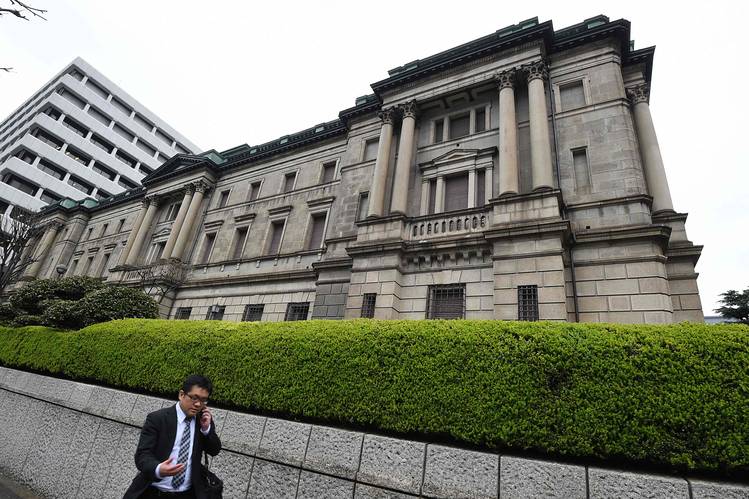Markets
BOJ Flags Smallest Long Bond Buys Since ’14 to Control Curve

Investors hoping the Bank of Japan would provide clues on how it plans to control yields in a monthly statement Friday were not disappointed.
The central bank reduced its target for purchases of debt maturing in more than 10 years to a range of about 200 billion to 400 billion yen ($2 billion to $4 billion) per auction in October from about 300 billion to 400 billion yen for the previous month. Based on its plan to buy 410 billion yen at the first auction next month, that would be the least since expanding asset purchases two years ago, based on calculations that assume the same purchase amount at each operation.
“The announcement shows the BOJ’s intention to steepen the yield curve,” said Kazuhiko Ogata, chief Japan economist at Credit Agricole SA in Tokyo. “The long end of the curve may see some selling pressure, but the impact on JGBs and the yen will probably be limited because the numbers came in within the expected range.”
The BOJ said in its Sept. 21 policy statement it is now targeting the yield curve, but only specified two points: the deposit rate at minus 0.1 percent and the 10-year yield “around zero percent.” That shone a spotlight on Friday evening’s statement in the hope that more on the desired curve shape could be gleaned from the central bank’s actual purchases.
The bank also lowered the target for five- to 10-year securities to 290 billion to 530 billion yen, from 300 billion to 600 billion previously. It left the frequency of its operations at 8 to 10 times per month, with an overall target to buy 8 trillion to 12 trillion yen.
Too Low?
The BOJ gave a clue to its intentions earlier Friday, when it bought 410 billion yen of five- to 10-year securities, instead of the 430 billion yen indicated in its statement for September. It was the first time in six months the central bank had reduced buying before releasing its monthly plan, and spurred speculation the benchmark yield might be getting too low for Governor Haruhiko Kuroda’s comfort.
“The BOJ may have reduced purchases in order to stem the decline in 10-year yields, which were approaching minus 0.1 percent,” Hiroki Tsuji, a Tokyo-based market analyst at Mizuho Securities Co. said before the announcement. “It’s likely to strengthen the market’s perception that minus 0.1 percent is the lower bound of what the BOJ will tolerate.”
The benchmark 10-year yield fell as low as minus 0.09 percent this week for the first time in a month. It was at minus 0.085 percent when markets closed on Friday in Tokyo, unchanged since the release of the statement. The yield rose above zero for the first time since March on Sept. 21.
The gap between yields on two- and 30-year debt — a measure of the steepness of the curve — is near the same level as it was at the time of the policy meeting at around 72 1/2 basis points, after compressing to as little as 66 basis points in the interim.
Uncharted Territory
Kuroda’s targets for the yield curve take Japan’s monetary policy further into uncharted territory as he struggles to stoke inflation. It also spurred calls for clarity on how he plans to implement the changes, as well as prompting speculation the BOJ may be laying the groundwork for a reduction in its 80 trillion yen a year in bond purchases.
The bank said last week it would adjust the volume of its asset buying as necessary in the short term to control bond yields, while keeping them at about 80 trillion yen annually over the long term. The central bank has had a target to buy 8 trillion yen to 12 trillion yen in government bonds from the market each month. The BOJ owned 36 percent of outstanding JGBs at the end of June.
A summary of opinions from the central bank’s meeting released Friday morning in Tokyo showed policy makers don’t intend to peg 10-year yields at zero for long in the future, and they will examine an appropriate shape for the yield curve at each gathering.
“Nobody knows what the ideal shape for the yield curve is,” said Makoto Suzuki, senior bond strategist at Okasan Securities Group Inc. in Tokyo.